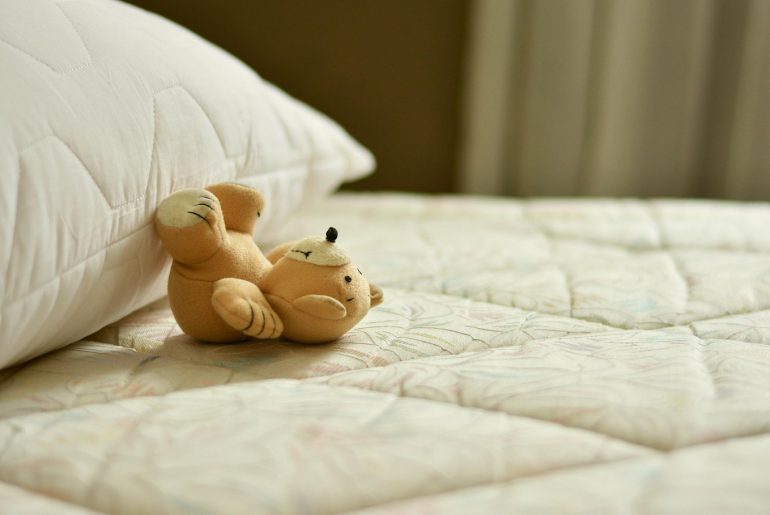Mattresses are essential to our daily lives, offering the comfort and support we need to sleep well and recharge. But behind the plush exterior and supportive core lies a sophisticated manufacturing process, where industrial sewing machines play a pivotal role. From quilting to edge stitching, these machines – and the specialized attachments they use – are at the heart of mattress construction. This article explores how mattresses are made and delves into the critical functions performed by various industrial sewing machines during the process.
The Mattress Manufacturing Process: An Overview
Mattress production involves several stages, combining textile work, foam fabrication, and mechanical assembly. Here’s a general breakdown of the key steps:
- Material Preparation
This includes cutting layers of foam, fabric, and insulation to size. Common materials include memory foam, polyurethane, latex, innerspring coils, and textile covers. - Quilting the Mattress Panels
Quilting involves stitching the top fabric layer to foam and/or fiber fill to form a padded panel. - Border Construction
The sides (or borders) of the mattress are typically made from a sturdier fabric and may include handles or vents. - Assembly
The mattress core (foam or innerspring) is layered and enclosed within the quilted panels and side fabric. - Closing and Taping
The final step involves sealing the mattress using a process called tape edging – sewing a thick tape along the perimeter to bind the top and bottom panels to the side borders.
The Role of Industrial Sewing Machines in Mattress Production
Industrial sewing machines are engineered to handle heavy-duty tasks with high speed, consistency, and durability – all essential for mattress manufacturing. These machines vary based on their intended purpose, stitch type, and available attachments. Let’s break down the types of mattress manufacturing machines and their uses in the different stages of mattress sewing.
1. Quilting Machines: Stitching Comfort Layers
Purpose: Quilting the top panel of a mattress.
Machine Type: Multi-needle quilting machines
These machines stitch together the top fabric, foam, and padding into intricate patterns using multiple needles simultaneously. Quilting not only enhances the aesthetics of the mattress but also helps secure the inner comfort layers in place.
Key Features:
- Programmable stitch patterns
- High-speed operation (up to 1200 stitches/min)
- Adjustable needle spacing
- Servo-controlled fabric feed systems
Attachments Used:
- Pattern guides or CNC control for stitch design
- Automatic fabric tensioners
- Edge cutters for precision panel sizing
2. Border and Panel Overlock Machines: Ensuring Clean Edges
Purpose: Sewing the side panels and top/bottom quilted layers with a clean finish.
Machine Type: Heavy-duty overlock or serger machines
Used to bind the raw edges of fabric and foam to prevent fraying. These machines produce a durable, overcast stitch ideal for joining thick or stretchy materials.
Key Features:
- Multiple thread cones (usually 3- or 5-thread)
- Differential feed to handle layers of varying thickness
- High-presser foot lift for bulk materials
Attachments Used:
- Knife blades to trim excess material
- Pneumatic foot lifters
- Edge guides for consistent seam width
3. Border Tackers and Decorative Stitch Machines
Purpose: Attaching decorative elements like handles, labels, or piping to the side panel.
Machine Type: Lockstitch and tack stitch machines
These machines apply reinforcement and embellishment to mattress borders.
Key Features:
- Programmable tacking patterns
- Zigzag or decorative stitch capabilities
- Heavy-duty needle penetration
Attachments Used:
- Label and handle feeders
- Clamp systems to hold material in place during stitching
- Piping or welt foot attachments
4. Flanging Machines: Preparing for Final Assembly
Purpose: Sewing a flange (fabric border) around the quilted panel for attachment to the mattress core.
Machine Type: Flanging machines (chainstitch or lockstitch)
These specialized machines sew a flange tape to the panel edge to facilitate secure joining with the mattress body.
Key Features:
- Chainstitch formation for flexibility
- Fabric pullers to handle bulky panels
- Seam guides for accuracy
Attachments Used:
- Automatic flange tape feeders
- Corner turning guides
5. Tape Edge Machines: Final Sealing and Finishing
Purpose: Sealing the mattress by stitching a fabric tape along the top and bottom panel edges.
Machine Type: Tape edge machines (lockstitch or chainstitch)
These are among the most critical machines in the mattress manufacturing process. They create the finished seam along the mattress edge, providing structural integrity and a polished appearance.
Key Features:
- Tilting sewing head for access to both top and side seams
- Rotating table for smooth mattress movement
- High-torque motors for thick materials
Attachments Used:
- Tape feeders
- Adjustable edge guides
- Pressure foot systems tailored to varying heights
Advanced Technologies in Mattress Sewing
Modern mattress production increasingly uses automation and computer control to ensure quality and efficiency. CNC quilting machines and robotic tape edge systems allow manufacturers to program designs, control stitch density, and reduce labor costs.
Additionally, digital tension control systems and real-time monitoring software help maintain consistency across thousands of units.
Conclusion
The construction of a mattress is a complex, multi-stage process where industrial sewing machines play an indispensable role. From the first quilt stitch to the final tape edge, each machine and attachment is specialized for durability, precision, and speed. As the mattress industry evolves, innovations in industrial sewing technology continue to enhance product quality, reduce waste, and increase manufacturing efficiency – all while delivering the comfort consumers rely on.

